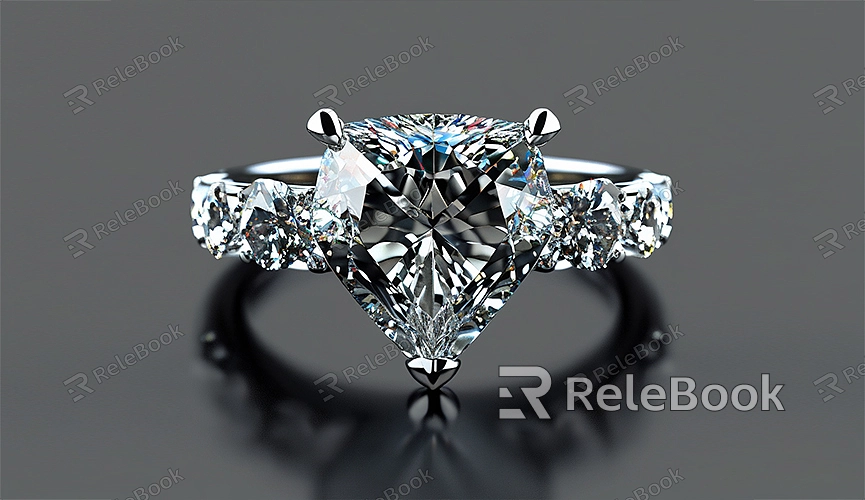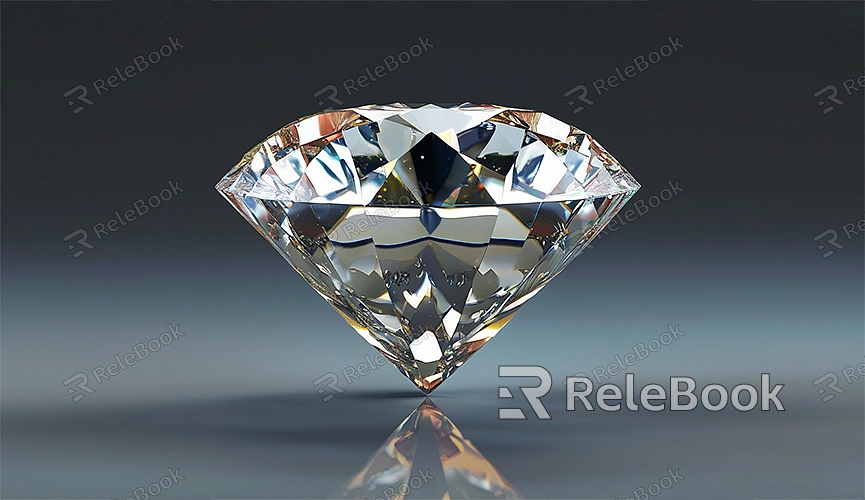How to render diamond in blender
Diamond rendering is a highly challenging but rewarding task. As an extremely complex material, a diamond's optical effects, such as refraction, reflection, and dispersion, require precise settings to be accurately represented in 3D software. In Blender, by adjusting materials, lighting, and rendering settings, you can create a realistic, sparkling diamond model. This article will explain how to render a diamond in Blender and provide some practical tips to help you achieve the desired effect.

Create the Diamond Model
The first step in rendering a diamond is to create a diamond model. You can either model it manually or use a pre-existing 3D model. If you choose to model it manually, Blender offers powerful polygon modeling tools. You can start with a basic geometric shape, such as a cylinder or cube, and gradually sculpt the diamond's form using tools like subdivision and scaling in Edit Mode. Pay attention to each facet, as the diamond’s cut is crucial to its optical effects.
For those who prefer not to model from scratch, you can download ready-made diamond models from various resource websites. If you need high-quality 3D models, you can download them from [Relebook](https://3dmodels.relebook.com/). Relebook offers a vast collection of premium 3D resources, allowing you to quickly build your model and focus on materials and rendering details.
Material Setup
Once you have your diamond model, the next step is to set up its material. The uniqueness of a diamond lies in its optical properties, such as a high refractive index and dispersion. Blender's material node system is highly capable of simulating these properties accurately.

- Refraction: The refractive index of a diamond is approximately 2.42, so you need to use the “Glass BSDF” node in the material setup and set the index of refraction (IOR) to 2.42. This setting is crucial for mimicking the diamond’s optical properties, as it determines how light passes through the diamond.
- Dispersion: Dispersion is one of the main reasons diamonds sparkle. In Blender, you can simulate dispersion using a combination of the “Shader to RGB” and “Color Ramp” nodes, which will create the rainbow-like effect on the diamond's surface.
- Reflection: Another key characteristic of diamonds is their high reflectivity. To enhance the reflective effect, you can add a “Glossy BSDF” node to the material and adjust its roughness and reflectivity as needed.
Lighting Setup
Lighting plays a crucial role in rendering diamonds. To maximize the diamond’s optical effects, it’s recommended to use multiple light sources, including point lights, environment lighting, and an HDRI background. Using Blender’s “Area Light” or “Spot Light” can help highlight the diamond’s details, ensuring that it shows strong contrast between light and shadow during rendering.
HDRI backgrounds are also helpful for realistic rendering, as they can simulate real-world light reflections, making the diamond’s refractions and reflections more lifelike. If you need high-quality 3D textures and HDRIs for your models and virtual scenes, you can download them for free from [Relebook](https://textures.relebook.com/). Relebook’s high-resolution HDRIs can enhance your scene’s realism, especially when dealing with complex optical materials like diamonds.
Render Settings
Rendering is the final step in converting the model into a realistic image. In Blender, it’s recommended to use the Cycles render engine, as it handles complex ray tracing better, especially for materials like diamonds that require refraction and reflection.
- Sample Count: To achieve a higher quality render, it’s advisable to increase the sample count. Diamonds, with their complex materials, typically require a high sample value (e.g., 2000 or higher) to ensure smooth light and shadow transitions and refraction effects.
- Light Bounces: In the render settings, increasing the number of light bounces will allow the light to reflect and refract multiple times within the diamond, resulting in a more realistic effect. However, increasing the bounces will also lengthen render times, so you’ll need to balance quality with time.
- Denoiser: Diamond renders are prone to noise, but Blender’s built-in denoiser can help reduce noise and improve the quality of the final render.
Rendering a diamond in Blender requires meticulous material setup, thoughtful lighting, and high-quality render configurations. By focusing on key optical properties such as refraction, reflection, and dispersion, you can create a realistic and dazzling diamond model. If you need high-quality 3D textures and HDRIs, you can download them for free from [Relebook](https://textures.relebook.com/). If you’re looking for premium 3D models, you can also download them from [Relebook](https://3dmodels.relebook.com/). Relebook offers a wide range of top-tier 3D resources, providing more inspiration and support for your creative projects.

